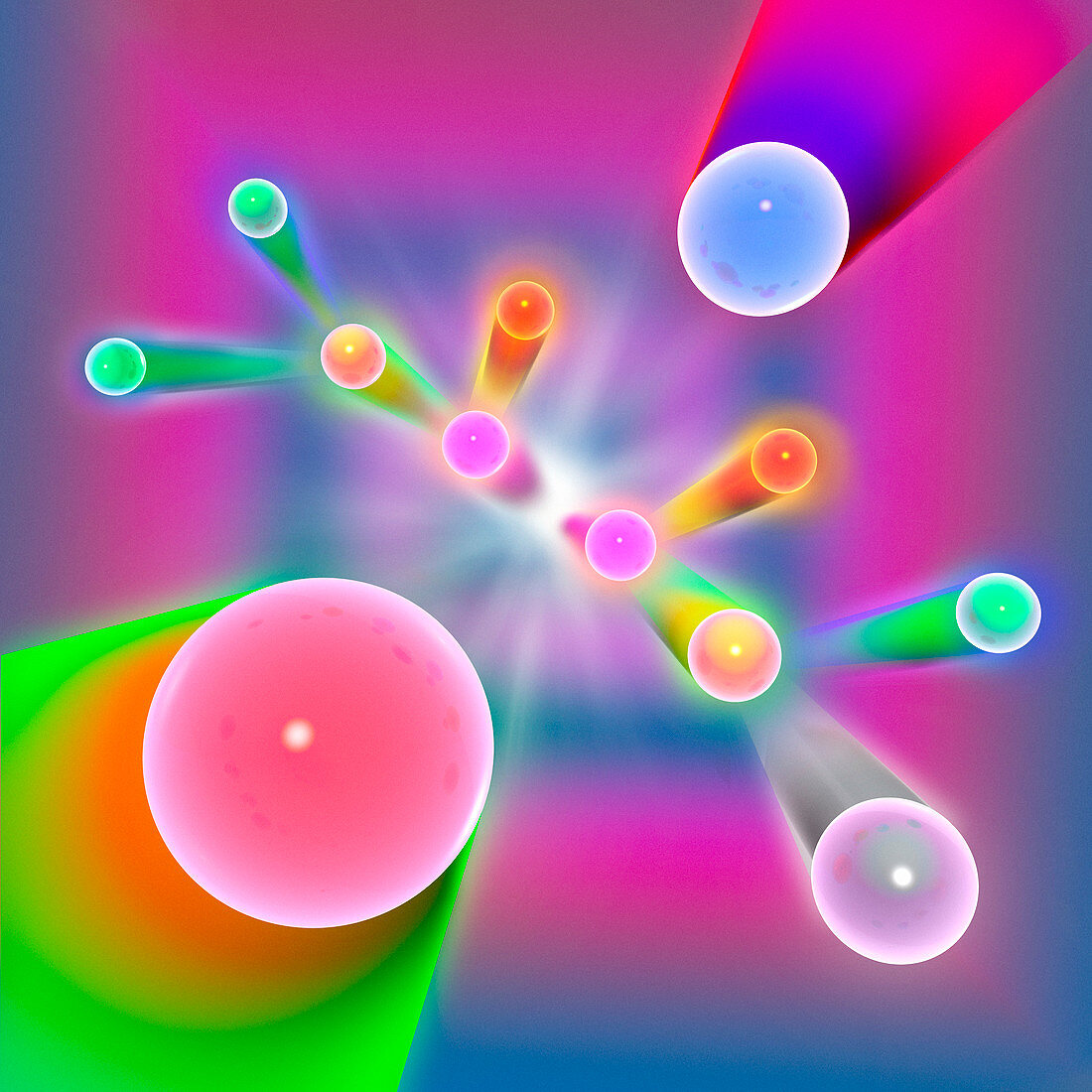Supersymmetric particle production
Numéro d’image : 11518082

| Supersymmetric particle production. Computer artwork showing the results of a collision between a quark (pink) and an antiquark (blue). The collision will form two heavy supersymmetric particles (purple) that will decay into two lighter supersymmetric particles (red) and W and Z particles (pink orange). The W particle (right) then further decays into a muon (green) and an antineutrino (white) and the Z particle (left) decays into a positron and an electron (both green). As of March 2007 supersymmetric particles are yet to be detected. It is hoped that the high energy collisions possible within the Large Hadron Collider (LHC),which begins operation in the summer of 2007 at CERN,will allow the detection of supersymmetric particles | |
| Licence : | Droits gérés |
| Crédit: | Science Photo Library / Kulyk, Mehau |
| Taille de l’image : | 4000 px × 4000 px |
| Model Release : | Non requis |
| Property Release : | Non requis |
| Restrictions : | - |
Prix pour cette image À partir de 45 €
Produit vendu
(Calendrier, Carte postale, Carte de vœux, Impression sur textile, Packaging etc)
À partir de 45 €
Usage commercial
(Affichage, Annonce presse, Annonce TV, Carte, Digital - hors rés. sociaux, Digital - rés. sociaux etc)
À partir de 45 €
Éditorial
(Digital, Journal, Livre, Livre pratique, Magazine, Télévision etc)
À partir de 60 €
Usage non-commercial
(Digital - hors rés. sociaux, Digital - rés. sociaux etc)
À partir de 120 €
Mots clés
- antiélectron,
- bosons Z,
- CERN,
- collision,
- décomposition,
- électron,
- électronique,
- entrer en collision,
- G.H.C,
- GCH,
- grand collisionneur de hadrons,
- haute énergie,
- illustration,
- modèle standard,
- muon,
- oeuvre,
- particule,
- particule de Z,
- particule W,
- particule Z,
- particules,
- physique,
- physique des particules,
- positron,
- quark,
- se heurter,
- subatomique,
- supersymétrie
